Printed Edition ‖ No.: 212
“Today the Independent announced a historic transition: we are embracing an exclusively digital future.”
The announcement from Evgeny Lebedev, the owner of ESI Media, to stop publishing its newspaper the Independent (starting on March 26th) posed an essential question around the future of global print journalism: as technology advances and global media empires switch to digital formats for larger audiences with less costs. This raises the fundamental question: for how long can paper hold out as a news-delivering medium? The answer, is not an easy one, as the challenge is further compounded by the growth of social media, which has recently taken a central role in providing information to many audiences.
The British company’s decision to stop the paper publishing of The Independent and to focus on digital services, heralds the future in the views of cautious investors and media experts who believe that the paper-era of journalism is nearing its end. In a letter to employees about the stop of paper publishing, Lebedev stated “today The Independent announced a historic transition- at a time when our journalism is read and respected by more people and in more places than ever before. We are embracing an exclusively digital future.”
This step may cause others, including Arab newspapers, to follow suit. Newsweek Magazine, one of the most important American media publications, stopped its printed publication in the end of 2012, after more than 80 years, due to decreasing add revenues. However, in March 2014, Newsweek returned to print publication. Some statistics and reports point to a general decline in print newspaper sales worldwide in the face of a constant rise in readership over the internet. According to a statement from Khalid Salah, editor-in-chief of the Egyptian newspaper “The Seventh Day (al-Yawm al-Sabi’a) to the paper the Middle East (al-Sharq al-Awsat), the number of newspapers printed daily in Egypt had declined to 800,000 by the end of May 2015, whereas the figure was at 1 million in 2010.
Egyptian Newspaper Circulation as of November 2016:
Al-Aharam: 180,000
Al-Akhbar: 150,000
Al-Masri al-Yawm: 110,000
Al-Watan: 65,000
Al-Shurouq: 25,000
Al-Wafd: 25,000
Al-Mawal: 10,000
The Voice of the Umma (weekly): 25,000
Al-Sabah (weekly) 25-30,000
Egypt Journal: 10,000
The Arab Spring boosts print journalism
In the Middle East, the Arab Spring gave the field of print journalism a renewed momentum in the form of new freedoms granted to it by the revolutions in Egypt, Tunisia, and Syria. Although each country is different, print journalism is still important for its readers for several reasons, most notably the absence of any alternative. Here, we will discuss the Syrian model in which the revolutionary press is an alternative to official state press.
However, media experts expect that the technological revolution and the fast spread of news on social media will play a role in the life of print journalism in Arab countries, where conflicts have led to a lack of electricity and internet, which are integral to digital media. This means that the Arab reader, especially the Syrian one, is now much more likely to get their information from a newspaper or magazine than any time in the past.
Readership patterns are changing
There is another opinion that says that the “behavior of readers” is changing with the nature of technology and the speed at which events develop. They will no longer wait for the next morning to get their news, but expect to stay informed up to the minute on what is happening, and this is what print journalism lacks.
However, the speed of digital media and the ease with which it is distributed results in limited and superficial coverage, leaving it up to print journalism to take the initiative in producing in-depth reports, stories, and analyses.
The difficulty of reaching audiences
In a conversation with Enab Baladi, Samir al-Tawil, a Syrian journalism who worked for a print newspaper before switching to a news website, said that social media has caused the decline of print publications, as evidenced by the number of current print publications compared to websites.
“The main reason for the limited circulation of print journalism is the difficulty of access and reaching audiences. Circulation issues (caused by not being able to reach certain areas because of the ongoing war in Syria, for example) is also a problem. This doesn’t just apply to Syria, but to print journalism all over the world.”
Tawil believes that print journalism in Syria had a limited impact on the Revolution and that digital media will inevitably take its place.
As for state-run media and the publications that the Ministry of Media continues to publish, Tawil also believes that they have a limited impact, because they have a very limited reach- as many cities and towns are no longer controlled by the government. According to him, circulation of government print publications is limited to Damascus and areas on the coast, and their numbers are not what they were before 2011, indicating that official state print media is also in a decline.
Digital media and avoiding scrutiny
The Digital media was first introduced with the issue of the American “San Jose Mercury News” in 1993, followed by the first inauguration of websites for the British newspapers The Daily Telegraph and The Times in 1994.
In the Arab world, Al-Sharq al-Awsat was one of the first Arab papers to appear on the internet, launching its website on September 9th 1995. The Lebanese paper al-Nahar followed suit, launching its paper on January 1st 1996.
However, the big leap that came in digital media was after the events of September 11th, 2001. As the world witnessed the unfolding events in America, digital media and news websites provided up to the minute coverage of the historic events of that day; an area where some traditional media forms failed, according to several reports. Digital media continued to develop in its professionalism, to the point that it rivaled and threatened print media, most notably in terms of profit.
hazame Zahour Adi, a writer and researcher, recalled the enthusiasm for journalism during the pre-Revolution days, when the Damascus newspaper Al-Dumri was publishing and helping expose corruption.
“One of the reasons for people’s passion for journalism then was because it was taking on subjects that mattered to the people.”
Today, it appears that things have changed. Digital media appeals to the new generations more than print because “it bypasses the scrutiny of society, family, and government. This is true all over the world, but especially in Arab countries.”
Adi also pointed out that one of the reasons for the severe decline in Syrian print journalism is strict government censorship, which has led most readers to believe that papers are nothing more than a tool of the Regime. Although some writers have attempted to rid themselves of this label, it has largely stuck.
The writer also linked continuity of Syrian print-journalism to continuity of the Revolution, especially after the decline of print-media around the world as the statistics show. She wishes that the owners of newspapers would publish monthly statistics charting their circulation, so they could better appraise their futures. In her view, the success of print media is connected to the success of the Revolution in achieving greater freedoms. These freedoms, according to her, help print-media in maintaining its position at head of the mainstream press in Syria.
Enab Baladi read the book “The New Digital Era” by Eric Schmidt, executive chairman of Alphabet Inc. (formerly named Google), in which he sees that readers’ future focus will be mainly on thorough analysis by experts and specialists, as well as the aftereffects of events, something that the digital media cannot provide given the nature of its readers. Schmidt believes that the printed media should focus on investigative journalism based on documents, evidences and train the necessary staff for this field.
Revolutions galvanize Arab journalism, but…
There are many constraining factors on print journalism, including the rising costs of printing and the price of paper itself, in addition to the increasing competition from other forms of media, chiefly digital media (and to a lesser extent, television). However, print journalism retains an audience that trusts it and believes that it presents a high level of credibility in its coverage. Doctor Muna Majdi Faraj, a professor at the College of Media at Cairo University, says that private print-newspapers in Egypt have had a positive influence, exposing corruption and reporting on the Revolution throughout the country, as well as giving writers a platform to express their analysis of the situation in the country.
Majdi told Enab Baladi that these private newspapers benefited from the freedom of the revolution, in publishing secrets pertaining to officials’ use of public funds. However, she notes that the number of subscribers for these private newspapers has fallen 60% since the beginning of the Revolution. She pointed to the newspaper al-Masri al-Yawm (Egypt Today), the daily circulation of which has fallen from a pre-Revolution amount of four million, to just 10,000 copies.
In Majdi’s opinion, war has an impact on the attitudes of readers in addition to an affecting papers’ circulation as it prevents the importation of raw materials. She mentioned several other factors affecting print media at the moment, chief among them that people have begun to prefer online news content and have stopped reading newspapers, a phenomenon compounded by the affordability of cell phones and the rising cost of paper and ink.
A state of flux is healthy for the media sector, said Majdi, noting it is better than the control of a discourse in journalism. She mentioned that many young writers and journalists became famous in the field and many in-depth investigations were published, but noted that print media has been setback since the military took back power.
She concluded that “private newspapers provided serious analyses and investigations that citizens appreciated, as there was a general climate of freedom in the country and they felt that the newspapers exposed corruption and worked to realize the goals of the Revolution.”
Print newspapers at the whim of funders
Muhanad al-Haj Ali, a Lebanese journalist, said the decline of print newspapers in Lebanon is linked to the separation between the reader and their political orientation. According to him, readers attempt to determine the financial health of the institution, but tend to be a burden on them, as they create a tension between what is too sensitive to be published and what the funder requests. Al-Haj Ali sees strong parallels between the state of the Lebanese and Syrian presses. “If we ignore the regime’s state media and looked at the print newspapers based outside of the country, we find they are funded by NGOs and other countries with funds specified to combating extremism and supporting civil society.”
He said that these funds that are supporting new media organizations in Syria will be short-lived, which will present a challenge to emerging media organizations.
“Where will they get funding source given the economic downturn?” he asks.
However, the successes of local media organizations are a new light in Arab journalism in al-Haj Ali’s opinion.
“In Lebanon, this issue has proven remarkable, because local organizations were able to fund small local media organizations, as long as the organizations were politically linked to the local powers that be, so I hope that local media organizations will continue and national ones vanish after the war winds down in Syria.
Exploiting “young” journalists for the sake of saving money
The basic problem, from the standpoint of Muhannad al-Haj Ali, is that the structure of the financial institution is “exploitative”- and since the media is a publisher-profit organization, it depends largely on young journalists in providing their own salaries. This exploitation, in Haj Ali’s opinion, is due to the weakness of the organization as whole as a result of political pressure and political “domination”.
Haj Ali stressed that the “financial model of journalistic institutions in Lebanon is based upon the ‘traditional’ media method, or what is referred to as the ‘building’ model. This model requires a lot of money, which is not readily available on the open market. Rather, it works only through regional proceeds (with heavy reliance on international and domestic support), which does not currently exist today.” Haj Ali then went on to conclude that, “the new Syrian institutions are far away from this model, a model which only really helped in informing the Assad regime.” This, Haj Ali believes, is “also one of the main causes of atrophy of the traditional media in Lebanon.”
“Small shops” pump out media products
Most media theorists gather (both Syrian as well as Arab- including the journalist Musab al- Hammaadi), that the new media has come about as a result of the Syrian Revolution and its influences. However, some of these theorists went on to further assert that a number of the new institutions are simply “media shops”, founded on the basis of “profiteering” from the revolution.
In his interview with Enab Baladi, al-Hammaadi said that “printed journalism’s role in the moral and cultural celebration was witnessed by large areas of the country, as it was liberated from the Regime’s grip. At that moment, organized activists went about and enthusiastically issued their publications on freedom, without fear of the Regime or its censors, and as a result, came out w8i9ith a number of Syrian talents that were a source of national pride and admiration.”
He explained, however, that the cultural situation witnessed in Syria since the beginning of 2012 did not continue past the following year- since the domination of Al-Qaeda quickly flourished on these newly freed areas, and replaced rebel publications with those which advocated jihad. Ever since this media takeover, a number of “profiteers” have worked to open “media shops” outside of the country, far away from the affected area and its supposed influence.” According to al-Hamaadi, these outside profiteers “started to claim that they were “informed of the revolution”, and that they are the “revolutionary knights of the Media”, as he put it.
Al-Hammaadi further pointed out that “the newspapers that deserve respect are becoming more and more scarce, and there will not be a good future for print journalism, until firstly- Syria’s repressive regime gets overthrown, and secondly- until the overly restrictive fanatics and those who exploit the weak step down, and all shady international support for them is finally cut off. Only then, could a real and solid opportunity arise for the rebirth and establishment of print journalism, and we have already seen its true portents- which have arisen despite witnessing dark scenes. “
For now, print journalism will continue operating in Syria for the foreseeable future, despite the electronic media creeping up as a viable alternative, according to al-Hammadi. He concludes, somewhat optimistically, that “maybe at the very least, our generation will not witness the expected end of print journalism. In the light of the existing data, and in Syria in particular- we cannot deny that there is a reasonable portion of the population that does not like reading and gazing at the paper, and thumbing through its pages as they skim through while holding it.”
Poll in Syria: Facebook First and Newspapers Second
The Syrian Network for Printed Information, working in collaboration with Imran Center for Research and Studies, conducted a poll earlier this year on public newspapers in the liberated areas of northern Syria. This poll, which included some 726 newspapers examined (in a concentrated sample), was conducted in an effort to evaluate the performance of the five independent newspapers which are currently distributed in northern and western Syria- which include “Enab Baladi, “Surriyetna”, “Sada ish-Sham”, “Tamaddun”, and “Kullna Suriyuun”. Furthermore, the poll was carried out to ascertain the opinions of the readers of these local newspapers, and to determine the sources of information by which the citizens get their news and information in these liberated Syrian territories.
In a sample taken among young residents between the ages of 19 and 35 (47% of which are staying in Idlib and its countryside, as well as Aleppo, Hama and Latakia), it shows that 81% of these residents have real and tangible access to Syrian newspapers, and that 50.7% of the total responders said that their level of confidence in print journalism was “medium”, while only about 38.2% of them considered their confidence in print journalism to be “high.”
When asked to identify the primary source of information for news and information, the social networking site “Facebook” won first place- with approximately 57.6% of followers, followed in second place by print journalism- with some 53.6%. These were then followed by television, which saw some 42%, and lastly, 32.6% of those polled admitted to getting their news and information from other websites.
In the analytical reading of the results of the survey, it was shown that social media- led by Facebook- appeals more to the concerns of the public, and in their attainment of viable news and information. This works in agreement with what experts and theorists in the field of information and communication have been saying- that print journalism will not be at its best standing in the coming years, unless it can manage to impose a stiffer competition with outlets of the digital world.
Hamad al-Othman, a Jordanian freelance journalist, said in an interview with Enab Baladi, that “the future is now for electronic journalism- in the face of rising production costs currently being experienced by print journalism. “Furthermore, he added that “the biggest proof of this is seen when looking at a cease in production for some of the world’s major printed newspapers.”
Othman pointed out that print journalism is currently finding its place in front of two choices; to either continue with readership decline and increasing losses, or to focus instead on the distribution of electronic copies. He emphasizes that very quickly, it is apparent that the second option is the one which should be chosen; adding that with this decision to switch to electronic newspapers (which would ease the flow of information and would be backed by the technological revolution and the increasing reliance on mobile phone applications), all of these Printed newspapers would lose a large part of their importance.
The website for the Syrian Prints Archive refers to the release of more than 290 circulating “opposition” newspapers in Syria since the beginning of the revolution, compared with the nearly 15 state-run (or Regime-linked) newspapers- a number of them still publishing and on top (including “al-Thawra”, “Tishreen”, “al-Ba’ath”, and “il-Watan”) .
Among the opposition newspapers, of which over 60% have stopped production, only 25 are still in print. The most notable among them comprise the Syrian Network for Printed Media- (which includes Enab Baladi, Surriyetna, Tamaddun, Kullna Suriyuun, Sada ish-Shaam, Ayn al-Madani, and Zaytuun), and each source prints out some 6000-7000 copies, 70% of which are dispersed in the northern liberated areas of Syria, and the rest is distributed to Syrian refugees found in the prominent Turkish cities. Other newspapers like al-Gharbal, Tala’ana ‘al-hurriyye, al-Harmal, Suwar, Yasmin Suriya, Boyer, Hibr, etc., are also printed in varying numbers.
Professionalism or funding from supporters?
The economic situation of the region, exacerbated by a decline in oil prices (in addition to the pressures on investment funds around the world) makes the media market exist in an unenviable state. As a result of these recent events, many media projects in the area soon foundered and stopped. Yet what is the reason for it? Can the existing projects once again be turned profitable?
Egyptian Media expert, Yasser Abdul Aziz, speaking in response in an interview with Enab Baladi, says that “US researchers say ‘No press industry without a business plan’- and this means that it is difficult to establish a journalism industry successfully without first studying logical financial feasibility; except, of course, if the public media is funded by taxpayers, and the media community is based on the idea of donations and volunteer work.” He pointed out that “in an atmosphere such as that in which the alternative Syrian Media arose, it may be possible to understand the reliance on the financing of friendly organizations; however, what ensures the success of the Media industry and its sustainability in isolation from political influence, is for it to build on financial feasibility.”
To get out from under the cloak of the financiers, and at the same time transition to profitability and professionalism, Abdul Aziz believes that “the absence of susceptibility to bankruptcy spoils the media industry, which hinders the policy and objectives of the financiers- and its objective, of course, is not to cause incitement or to ignore the revolution or abandon the Syrian people or trade.” Rather, Aziz asserts that “prosperity, sustainability and editorial independence can only be achieved through competitive administration, which is aimed at providing resources in convincing customers of product quality, as well as the ability of the product to meet professional standards.” Abdul Aziz then remarks that “this includes, of course, work in the public service, combined with a lack of over-reliance on others, as well as the ability to self-finance, and a good sense for competition and considerations of the market.”
Lastly, he adds, “representing the institutionalization of the industry and presenting it to the public to depend on it is the best way to guarantee funding for its continued survival and prosperity, and is also the best way to serve the citizens and advocate their cause.” Abdul Aziz believes that the situation surrounding the media industry will not remain as it is now. He asserts that there also is a risk in the development due to reliance on market mechanisms, and an inability to ensure the continuation of steady funding from supporting organizations. However, Aziz deems that this risk is not only “acceptable”, but more importantly is a step in the right direction.
Electronic paper tops the printed paper
The presence of printed newspapers has dropped recently, in favor of the electronic media, and the differences between these two media types (of which there are several) happen to favor the latter of the two. The most notable of these differences is in regard to material costs, as the issuance of printed papers needs a large amount of money and resources in order to function. The costs that go into enabling the printed press include costs for printing and distribution, as well as logistical costs and the cost of legal services and human resources. In contrast, the cost of the electronic media only falls on the cost for subscription to some network services, or for computer and software equipment. An additional advantage to electronic media is that some of the human resources and workers that are required to keep it running are not required to be present in one particular place.
In the meantime, print journalism’s ability to produce texts and images on a limited space of paper puts it at a severe disadvantage, and the electronic media outperforms the traditional press in its use of visual and auditory means, which has a greater impact on the reader. Furthermore, the electronic media has an additional advantage in having the ability to use multimedia (such as video, audio, and animation techniques), which works to allow greater interaction and participation for the reader. Additionally, printed papers can’t always provide news and information to the reader in full, and sometimes intentionally work to blur or highlight specific aspects of a story, in order to serve the biases of the paper’s owner. The electronic media, in contrast, can get the news from many different directions and sources- and can verify the information through “phenomenal” content searches, which the media then updates every so often.
The flow, speed, proliferation, and the widening reach of the electronic media are among the most important differences that characterize it. It does not stall or strain the flow of the news, as print journalism may do when copying and distributing printed material, as it does not have to have published materials pass through a series of professional and technical distributors before reaching readership.
One of the important differences between the two media outlets (paper and electronic), are the interaction features available for the electronic media, which allows a reader to interact directly with the journalists via websites, and to express his opinion to the published material. These participation features work to allow the recycling and transferring of news to constantly updating media circuits.
Another factor which newspapers have traditionally faced, are difficulties in their storage, archiving, and transportation; in addition, to there being a need for an actual physical space for their safekeeping, as papers can be influenced by weather (such as humidity), which can cause them to fade and wear, or cause ripping. By contrast, the electronic media has an advantage, in that electronic content can be stored in digital format; remaining available at all times, and working with all modern modes of display. As a result, this digital data can be stored just about anywhere, thereby saving space and maintaining low cost.
As for freedom of expression in the digital world- the electronic media’s borders are larger than its paper counterpart, and its concept is different. Most electronic newspapers give a margin of freedom to its readers to comment on news stories and interact directly with them- though this interaction may come in a somewhat unprofessional manner at times, and brings up a host of clashes, insults, and defamation. Some sites, however, consider this “incitement” as a way to bring in more visitors, and help lead to an increase in popularity and fame.
Disadvantages of electronic journalism
Despite the many positive indicators that are in favor of electronic journalism, a lot of challenges and negatives are still encountered, which pose a stumbling block in the way of excellence, namely:
Funding: Most electronic newspapers are currently suffering from financial difficulties, as material and financial return have not been achieving desired levels, and advertisers still feel no real confidence in electronic advertising, considering printed paper the more serious of the two types of media.
Self-censorship: The absence of regulation and supervision in the press is one of the professional challenges for the media in general, but the electronic media requires greater self-discipline and control of professional and ethical matters. Also, as the electronic media has an ability to get news and updates faster than its paper counterpart, excitement generated by this advantage may result in overall loss of accuracy, an abundance of mistakes- or sometimes even outright lies. As a result, many news sites have unfortunately become sources of rumors, half-lies, and false news.Easy deletion and modification: Flexible content control is one of the most important features of the electronic media, but on the other hand, it can also work as a source of suspicion and lack of confidence for readers. The possibility exists for unauthorized individuals to go back to edit or alter old news reports, or add on erroneous information to them- or even delete them altogether. This, on the one hand, makes some publishers fail in regards to their standards of accuracy and authenticity, while simultaneously making readers unsure of the stability and validity of the site’s reported and published information.
The similarity of content: Many sites rely on the copying and pasting of already-published pieces of news from local and international newspapers and news agencies, or sometimes- even from other news websites. When this happens, it is largely due to a site’s lack of experience in reporting, or its reliance on a small workforce. Due to an overall absence of specific legislation in regulating electronic journalism, most sites strive to do whatever they can in order to increase the number of visitors to their pages, in order to reap revenue.
The printed press in Syria will not disappear
As Dr. Majdi sees it, printed newspapers in general, including those operating inside Syria, are forced to change their present model of operation, if they are no longer among the first in transmitting the news, having been preceded by satellite television and the internet, and furthermore, the reader must not accept to pay for the price of a physical hard copy, when the same service can be offered by the electronic media free of charge.
It is possible that the role of newspapers has changed, and that this change may offer a new analytical dimension, and help compile background information for the coverage of events. Additionally, this new role may work in creating a trend for uniqueness, the creation of special “in-depth” reports, and also leave ample space for investigative journalism. Lastly, this new role may enable the employment of modern tools by which to display data such as graphs and forms, and provide a space for the exchange of opinion, including the writings of prominent journalists known throughout the world of journalism.
Dr. Majdi asserts that print journalism will not soon disappear, and indeed, even asserts that independent papers and alternative media (print) are in fact the solution, as they are resilient enough to allow print journalism to evolve. As Dr. Majdi puts it, the survival of print journalism rests squarely upon the shoulders of courageous young reporters, and the “online” media will not be able to pull the carpet from under the print media, as many Arab readers are tied emotionally to the newspaper. Of course, in Dr. Majdi’s views, this continued survival is only possible provided that newspapers start showing some effort in renewing and improving their image, role, and basic functions.
The printed press is still in the front of the line in terms of circulation in the region.” Ali Safar notes that, especially when approaching the subject from an angle of credibility, “Printed journalistic material is published on the basis of being clear and true, while online media sites and websites publish unverifiable material, and material from shady sources. That is why scrutiny towards the credibility of the printed press becomes larger and more important.”
As Safar sees it, this evolution in the Syrian media and what is currently going on is a good thing, in light of the conditions experienced by the media around the world, which is currently facing instability and an overall lack of sustainable funding. Safar emphasizes that “I think that the scores of men and women that are currently being trained will have a significant role in the next phase in the survival of media.”
if you think the article contain wrong information or you have additional details Send Correction
النسخة العربية من المقال
-
Follow us :
Most viewed
- Washington clarifies to Enab Baladi Assad's claims of secret meetings with US officials
- Al-Assad issues decree on establishing alternative information ministry
- Biden signs "Captagon II" act to pressurize Assad
- US Senate approves “Captagon II” bill, paving way for presidential signature
- After controversy over his fate, Ali Mamlouk appears in Russia











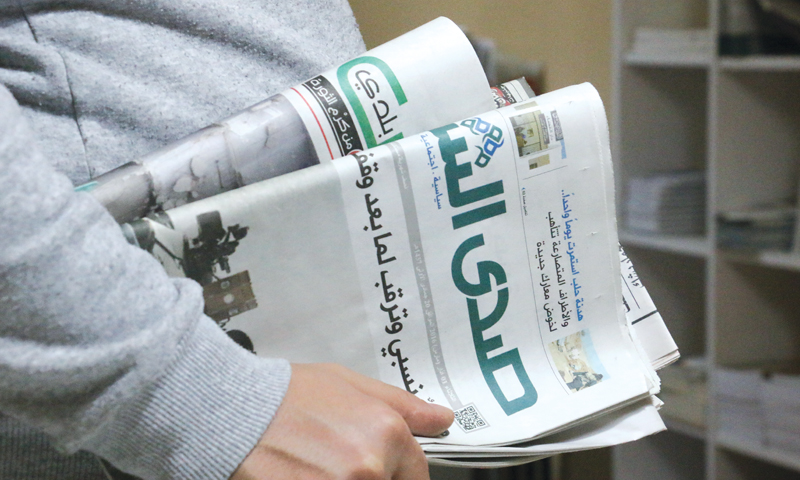






 A
A
A
A
A
A
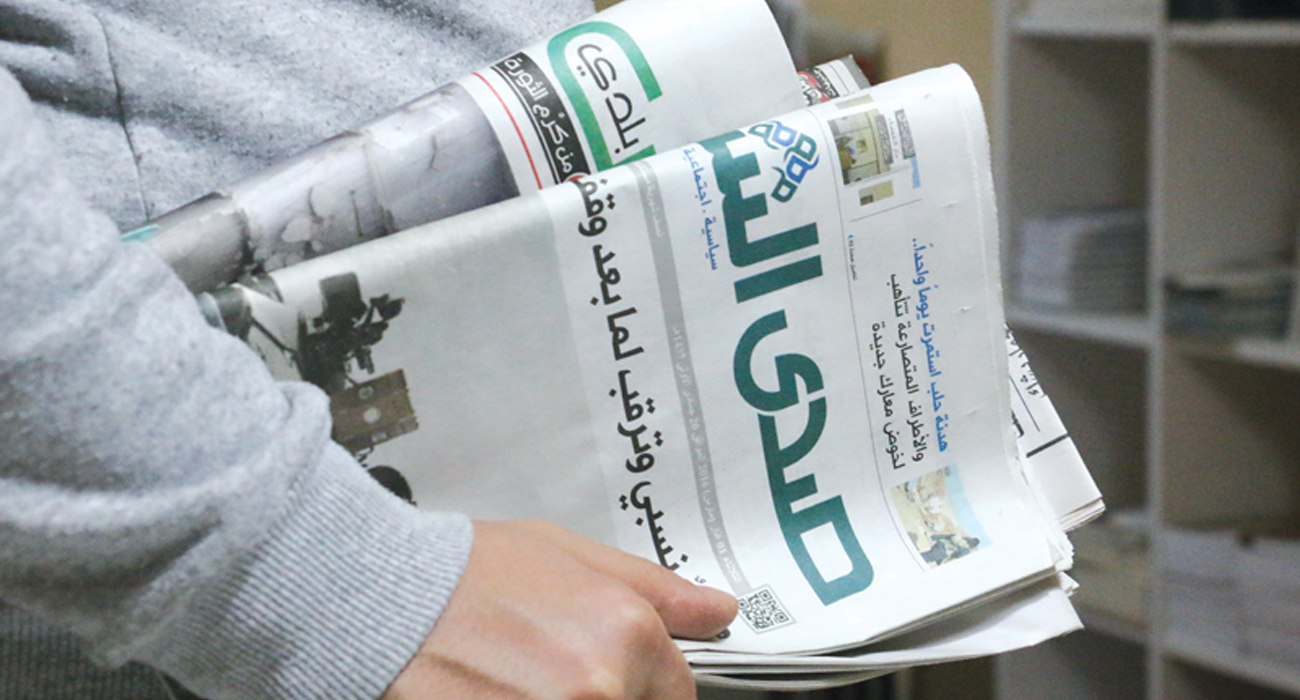






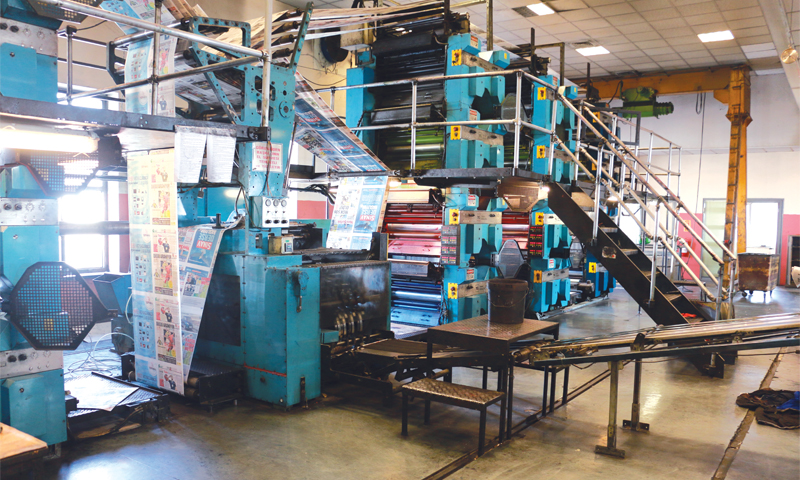



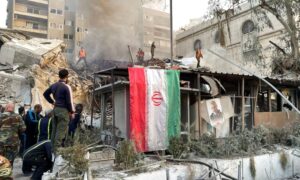


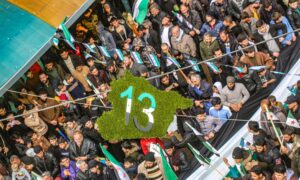
 More In-Depth
More In-Depth